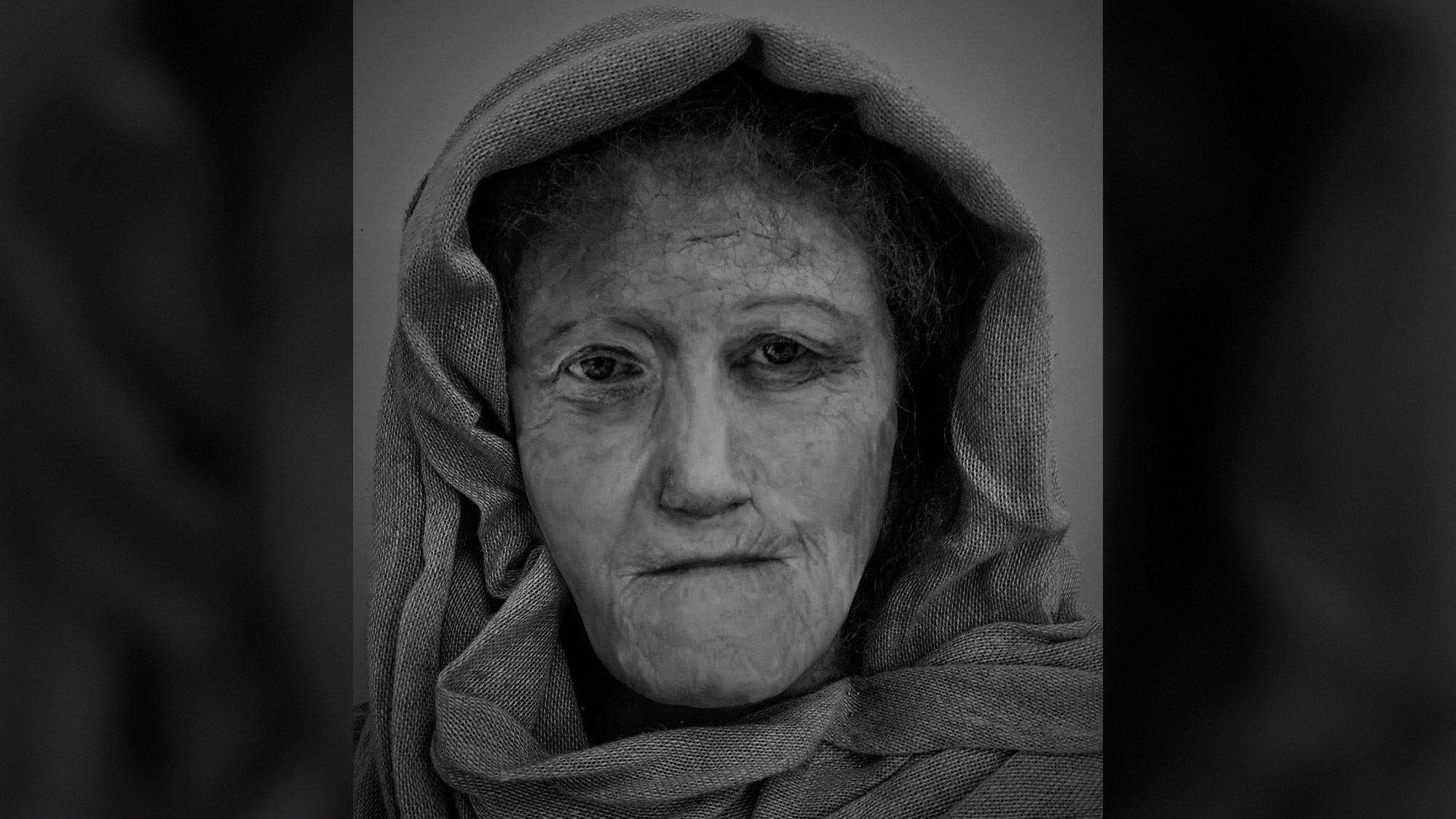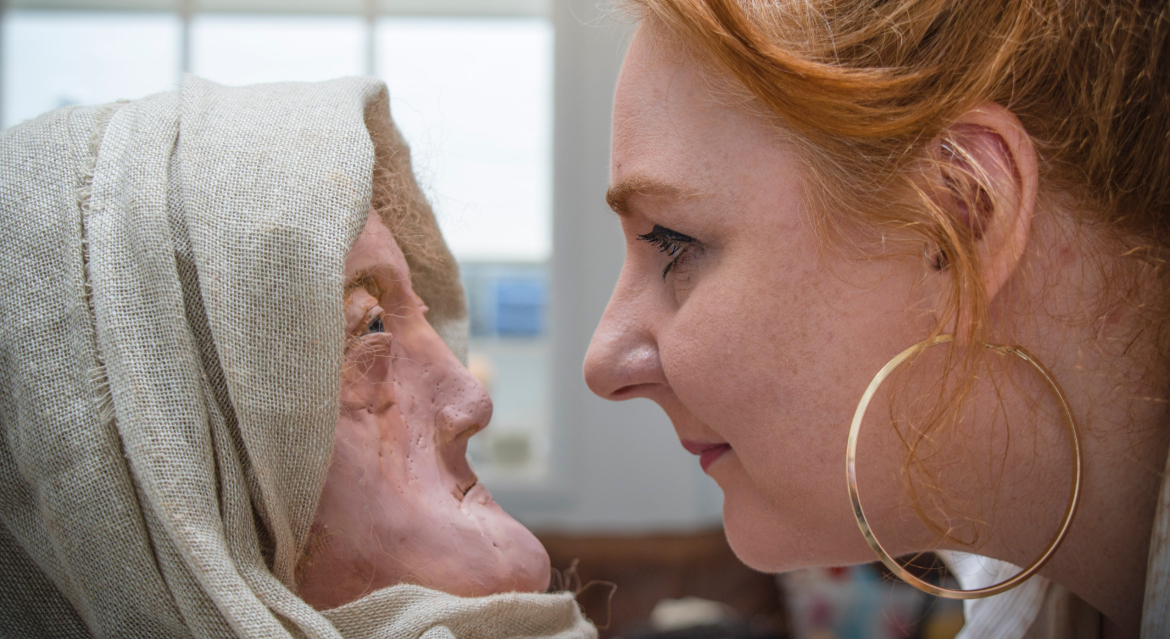Toothless Druid Woman's Face Comes Alive in Wax, Wrinkles and All
"Hilda" made it to her 60s at a time when most women lived only to their early 30s.

A toothless skull was all that researchers had of one of Scotland's oldest known Druids, but now they have something more: a wax re-creation of her face, showcasing her gnarled wrinkles and seeming intense determination.
The Druid woman, nicknamed Hilda, lived during the Iron Age. An anatomical analysis suggests that Hilda made it into her 60s, an impressive feat because most women from that region and time lived only until their early 30s, said Karen Fleming, a forensic art and facial identification master's student at the University of Dundee in Scotland.
"Hilda was a fascinating character to recreate," Fleming said in a statement. "A female’s life expectancy at this time was roughly 31 years, but it is now thought that living longer during the Iron Age is indicative of a privileged background."
Related: Photos: See the Ancient Faces of a Man-Bun Wearing Bloke and a Neanderthal Woman
Fleming also created a detailed digital image of Hilda wearing a shawl around her head.
Not much is known about Hilda. It's thought that her remains were found at Stornoway, on the Isle of Lewis, off the northern coast of Scotland. Her skull was one of six "Druids of the Hebrides" skulls presented to the Phrenological Society of Edinburgh in 1833. Since then, the skull has remained at The University of Edinburgh’s Anatomical Museum.
It's also not completely clear when she lived.
Sign up for the Live Science daily newsletter now
Get the world’s most fascinating discoveries delivered straight to your inbox.
"It’s impossible to know for sure when she died as we were unable to carbon date the skull," Fleming said. "But assuming the information in the journal from 1833 is correct, Hilda passed away anytime between 55 B.C. to 400 A.D. and was of Celtic origin."

The Druids lived in what is now the United Kingdom and France; they served as "great thinkers," mainly philosophers, teachers, judges and even as mediators between humans and gods, Live Science previously reported. Much of what is known about them comes from secondhand sources, including Julius Caesar, who conquered Gaul.
The earliest mention of the Druids dates to 2,400 years ago, and the group slowly died out about 1,200 years ago, as Christianity spread.
Creating a 3D wax head of the ancient Druid had its challenges. This summer's heat wave in Europe nearly melted Hilda before her features were completely finished, Fleming said.
Luckily, the wax head made it to completion, in large part by hanging out in a refrigerator. She will go on display, along with other student artwork, starting today (Aug. 16) through Aug. 25 at the University of Dundee's Masters Show.
- In Photos: Island of the Druids
- Photos: The Reconstruction of Teen Who Lived 9,000 Years Ago
- In Photos: Ancient Tomb of a Celtic Prince Uncovered
Originally published on Live Science.

Laura is the archaeology and Life's Little Mysteries editor at Live Science. She also reports on general science, including paleontology. Her work has appeared in The New York Times, Scholastic, Popular Science and Spectrum, a site on autism research. She has won multiple awards from the Society of Professional Journalists and the Washington Newspaper Publishers Association for her reporting at a weekly newspaper near Seattle. Laura holds a bachelor's degree in English literature and psychology from Washington University in St. Louis and a master's degree in science writing from NYU.










